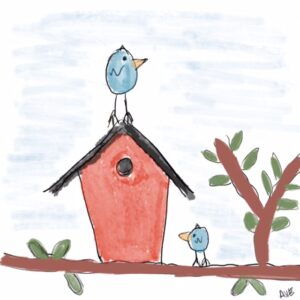
Have you ever taken a few moments to notice what your inner voice is saying? Try an experiment. Sit or walk silently for a few minutes and see what your internal voice says. You may then write down some of your frequent self-talk.
If you are like me or many of my clients, you may notice thoughts like, “How am I going to get this work done?” “I wonder how my client or colleague is responding to what I said in the meeting.” “I wished I had said something else.” “I wonder what will happen?” “I am tired. Will I ever have more time for fun?” etc. Thinking about the future and worrying about the past is a shared human condition.
With intention, we can become aware of what we are saying to ourselves. We seem to have an endless narrator telling us what we did wrong, what may go wrong, and what we should do. This voice, often referred to as ‘inner chatter,’ is so constant that we feel it is us, and there is little we can do to quiet its constant chatter. We have dozens of thoughts. This ‘inner chatter’ is the continuous stream of thoughts and self-talk that we experience throughout the day. It can be positive or negative, greatly influencing our mood and well-being.
We all have experienced the challenges of having draining thoughts that create negative energy. Often, we feel out of control and lack well-being as our inner thoughts berate us. We often feel stuck by these thoughts, which sometimes feel like they are in an endless loop, and we look for ways to drown them out.
Many of us are unaware of our thoughts and unaware that we can learn how to work with our draining thoughts. Rather than suffering with thoughts of worry, regret, and judgment, we can shift to thoughts that enliven us, are solution-oriented, and help us be more effective in our day-to-day lives.
How do we do this? First, we recognize that our thoughts are trying to protect us. We can befriend them and be curious about their messages. We can slow down and notice what our thoughts are saying.
If we judge ourselves and say something like, “You are worthless or unlovable,” we can slow down and question if there is evidence for such a judgment. Often, there is no evidence for such negative assumptions. We can appreciate that our thoughts are trying to protect us, and explore what may be needed now. Perhaps we must be kinder or slow down and assess how we want to interact.
Suppose you notice that you are worried about succeeding with a job or in a relationship. “I may not be successful with this job.” You can remember that you have handled many challenges and remind yourself, “I am resilient and will be able to manage what happens.” Reminding yourself of past successes will not only support your resilience but also reinforce your confidence in your ability to manage your thoughts.
When you focus on regrets, “I should have handled the email differently,” stop ruminating and tell yourself that you can learn from the situation for future situations.
We must adopt an open and growth mindset and trust that we are learning. A growth mindset is the belief that our abilities and intelligence can be developed through dedication and hard work. We can be kinder to ourselves and know that our inner chatter is actually intending to support us. Rather than telling the inner voice to be quiet, we can reassure it that we appreciate its goal of supporting us and know that it is not always warning us in the most enlivening way. By adopting a growth mindset, we can view our inner chatter as an opportunity for growth and learning, rather than a source of negativity.
We can train ourselves to talk to ourselves like a good friend. We would not call a friend names or ignore her.
It takes practice to become aware of and work with our inner chatter. However, it is well worth our intention to befriend it and direct our attention to noticing it.
What is your experience with your inner chatter? What strategies work best for you?









